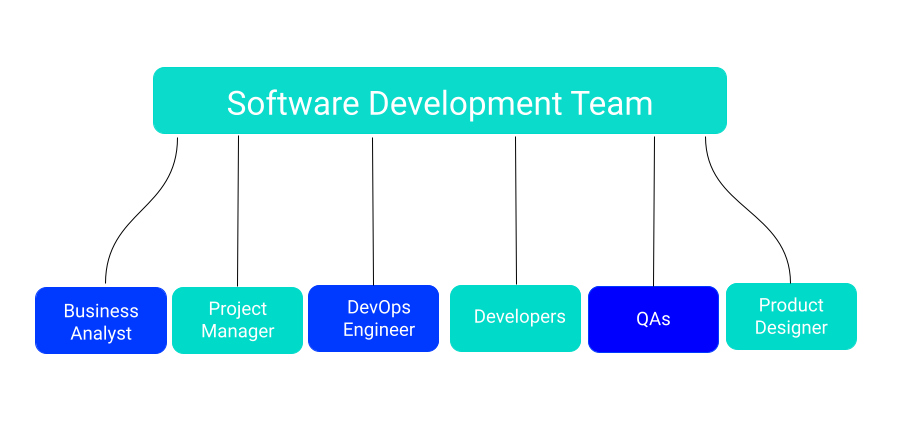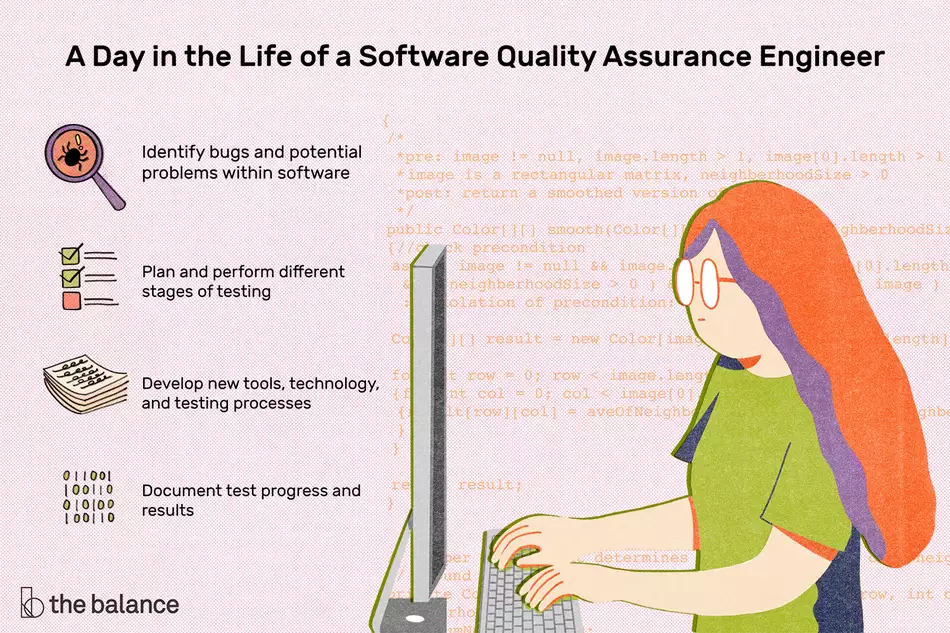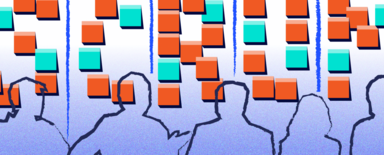
Not Only Developers. Get to Know Software Development Team Roles
When thinking about employees of software development agencies, developers are the ones that come to our minds in the first place. This is obviously no mistake. However, there are a few other very important roles to remember, without which even the best technologically prepared product may prove to be a total failure. In this article, we’ll show you who is a part of the software development team.
Software Development Team Roles
A software development team is a group of specialists who work together on creating software. The result of this work may include building a website or mobile application or preparation and launching a specific service, e.g., marketing automation. Depending on the given project, the focus on individual roles in the team may slightly vary. If the project requires, e.g., data migration or integration with external systems, there is no doubt that developers with hard technical skills have to be in the team. Where the goal is to change the graphic layout, a designer will play the key role. When there is a need to prepare a website for a traffic spike, a DevOps engineer is a must.

In this article, we’ll focus on the roles, other than the strictly development-related ones, which are necessary to complete the project effectively and in line with assumptions. We’ll thus describe such roles as a business analyst, project manager, DevOps engineer and designer, as well as the competencies of a testing team members.
Business Analyst (BA)
A person in this position is often the first one that a client comes to with his/her idea. We might say that a business analyst is someone who, before the development works even commence, “translates” the concept into the language of data and defines the main paths to reach the goal set by the client. The role of an analyst is invaluable, especially when the client doesn’t have enough time or adequate substantive knowledge to translate its vision into specific requirements.
This specialist supports the process of defining business objectives and suggests the methods to improve the product. They cooperate with the client to understand their problems and needs and analyse and document the information gathered to find the best solution. They help to define both the basic KPIs (Key Performance Indicators) as well as appropriate deployment methods that will be the most convenient for the client and the team.
Except that the BA must have the ability of analytical thinking, they should also be flexible and imaginative. Thanks to such abilities, they will be able to combine client expectations with the design work specifics while using the team's competencies to the maximum.
Project Manager (PM)
A good Project Manager is a key to success in each software project. Without a competent person in this position, managing teamwork and ensuring effective communication (also with the client) is impossible. The PM should know everything about the project, as this is necessary to predict potential risks and thus to take action in advance, so the project has a chance to fit within the planned timeline and budget.
What competences should a good Project Manager have?
Leadership qualities
Skilful project management requires leadership qualities, based on which the PM will define the direction for the team to follow. Thus, the project manager's task isn’t only to define the goals at the beginning of work but also to redefine them already during the process.
Key leadership qualities include:
- motivating – inspiring the team to work as effectively as possible and seek for out of the box solutions,
- building relationships within the team – encouraging a mutual exchange of knowledge, which directly influences the timely execution of sprints,
- decision-making ability – based on the diagnosis of a specific situation, identifying the aims one wants to achieve and seeking alternative solutions.
Knowledge of project management methodologies
Agile, Scrum, Kanban, Scrumban, Lean, Waterfall or PRINCE2… are the most common and known methodologies. It’s certainly difficult for the Project Manager to have in-depth experience in each of them, but they should have practical knowledge of how to use at least one method. If, for example, they are a Scrum specialists, using this methodology will contribute to maintaining quality throughout the entire project because:
- specific tasks are prioritised,
- periodic project meetings (sprint planning, daily, review, retrospective) have a positive effect on the flow of information,
- tests are run from the very beginning of the project.
To take full advantage of all the possibilities of this methodology, the PM should use the appropriate tools. One of those tools is Jira, which helps to effectively control what is going on in the project. All the information regarding the execution of tasks is stored in this software, and the client also has access to it. The Project Manager can see the prioritised tasks, the time planned for a specific action and the number of hours already used. In turn, periodical meetings become more effective, as it’s possible to define the time necessary to finish the tasks and report the progress of work to the client.
Change management skill
This is the part where we should mention change management. If the project is executed in line with the Agile methodology, you have to be prepared for iterations, namely repeating the same operation in a loop a predefined number of times as long as a defined condition is met. It may sometimes be required to make substantial changes, e.g., regarding the use of functionality for the developed website. The Project Manager must then modify the assumptions and communicate guidelines to the team, which won't be possible without this leadership quality.
Risk management skill
A good Project Manager must be ready not only for iterations. They should also be prepared for any potential risks. It’s therefore crucial at the beginning of the project to identify risks and thus develop emergency measures. Such a plan should include categories and/or areas of such risks, thus allowing for more accurate project security in the future.
Communication Skills
This is one of the key elements of good management. Without the effective flow of information, even the simplest project may cause troubles, unnecessarily consume time or waste budget. The manager should therefore have the necessary communication skills, such as:
- listening – so that none of the comments or difficulties in the implementation of individual tasks reported by the team is missed, which, in turn, could lead to, e.g., delays in project-related works,
- asking (further) questions – to make sure as to the needs and/or problems, and thus understand the message of the other part,
- clarity of expression – so the expectations towards the team members are clear to them (it’s a good idea to write them down and present them in the simplest form possible),
- using feedback – so that the other party is aware of their own strengths, but also weaknesses, from the perspective of task execution (the PM must also be ready to get feedback from the team regarding their work),
- using tools – to stay in touch, the Project Manager should use tools improving communication, like Slack. There are a few key reasons why it should be used, e.g., to reduce response time to the messages that require a quick answer, it gives the possibility to share code fragments in a clear form thanks to snippets or options for integration with other applications, e.g., Github, Bitbucket, and Jira.
Discover our dedicated development team services
DevOps Engineer
People say that software development agencies who handle projects without this specialist on board have already been outcompeted. Why? DevOps Engineer makes sure that the software product works 24/7, is cost-wise to maintain, easy to update, stays fast, and copes well with sudden spikes of users’ activity.
The role of this specialist means the combination of technical and non-technical competencies. The DevOps itself means Development and Operations, namely a set of practices that bring together in one process such elements as product development, implementation, maintenance and service with high-quality assurance.
DevOps’ presence in the team contributes significantly to:
- faster detection and fixing bugs, software quality improvement and reducing the time necessary to check and release new software updates; this takes place within the Continuous Integration practice,
- automatic implementation of all code changes in the test and/or production environment; this takes place within the Continuous Delivery practice,
- co-development of individual application as a set of small services, built around specific business opportunities; this takes place within the Microservices architecture practice,
- server management with the use of code development technique, according to which infrastructure is treated similarly to the application code,
- proactive service monitoring by developing alerts in real-time, aiming at the collection of data and verification of how the infrastructure capacity impacts the experience of the end product user; this takes place within the Monitoring and Logging practice,
- better alignment with project objectives by other team members (marketing, sales); this occurs within the Communication and Collaboration practice.

DevOps Process Flow. Source: Lucidchart
Moreover, the person in this position should be familiar with:
- Linux and\or Windows,
- creating scripts,
- at least one of programming languages, e.g., PHP,
- automation tools, e.g., Jenkins,
- cloud computing, e.g., Amazon Web Services.
DevOps and Agile
Agile should also be added to the above-mentioned practices as all programming actions should be constantly developed and optimised as needs change. You may say that DevOps develops Agile. The best efficiency is achieved when the time and energy aren’t wasted on manual work and technical sprints are devoted to the development of improvements.
As we can see, the role of DevOps impacts various areas and teams within an organisation. The sum of their competencies allows them to speed up software development, reduce the time necessary to market it, lower the process costs and limit the occurrence of bugs.
Software Testing
Software testing includes techniques aimed at checking whether a digital product meets technical requirements. The testing process is complex and multi-level – it isn’t handled by one person only, but a team of software testing professionals, including several important roles.
Quality Assurance Lead
The person in this position is responsible for controlling all software testing operations. They are responsible for the: strategy, resource planning, internal team communication, testing process estimation and supervision over the quality of the work performed by the team. QA Lead also manages external communication with the client or the Product Owner to gather testing requirements for the future product, communicate them to the team and make sure that everyone understands them.
Test Architect
They examine project requirements and prepare test structure. Test Architect should be experienced in both automation and manual testing, as well as should have a deep understanding of software architecture and system design. They must be technical support for team members at all stages, from creating scripts to bug fixes. No doubt, their voice should also be heard loud and clear when improving services.
Quality Assurance Analyst
This role combines experience in software testing with sector-related experience. However, more than on technical aspects of testing, the person in this position focuses on business logic and alignment with target group needs. QA Analyst cooperates closely with the Product Owner, software engineers and team leaders.
Quality Assurance Engineer
QA specialist detects bugs before users do. When testing applications, engineers must closely examine the effectiveness, safety, usability and layout of the software from the end user perspective.

Source: The Balance Careers
However, QA specialists aren’t only testers whose task is to assess whether the implemented functions meet the requirements. Such persons also write documentation, develop test cases and actively contribute to establishing best programming practices within the project. Their role is crucial in delivering a high-quality product and meeting the project requirements.
Quality Assurance Automation Engineer
QAA writes automated tests, namely, small background programs which verify the application in a way so it’s immediately clear what isn’t working well. “End-to-end” tests simulates real user behaviour – we can say that this way, the application tests itself. However, we should bear in mind that automated tests development isn’t that easy and that it also requires prior analysis to assess the advantages and threats resulting from such a solution.
Qualified QAA will ensure whether the client saves as much time and money as possible on testing/fixing bugs.
To conclude, the quality control team analyses the application and recommends which functions should be automatically tested and which not, keeping in mind the budget and the best ROI (return on investment).
Product Designer
To transform the product's vision into user-friendly projects and develop optimized paths from the perspective of the best user experience and the highest conversion rates, we need a Product Designer.
The designer is committed to ensuring that the application layout and the general interface are pleasing to the eye, but it isn’t their only task. The Product Designer is present during the entire product development process, from defining the business goals and translating them into a functional user experience, through analysis and assessment to enhancements of such experience in time.
Read more about our UX design services
The Product Designer should note any change in the conversion rates and suggest solutions that will bring closer to meeting business goals. They should also be ready to conduct design workshops with a client, resulting in creating a project vision based on the perspective of various people.
Software development team roles - summary
An experienced team of developers is necessary to create a digital product, but without the support of specialists from other departments, there is no chance for the software to reach its full potential, letting it make the most out of its advantages and meet the client’s needs. This is why, when starting cooperation with a software development agency, it’s a good idea to check who is in the team in addition to developers.










